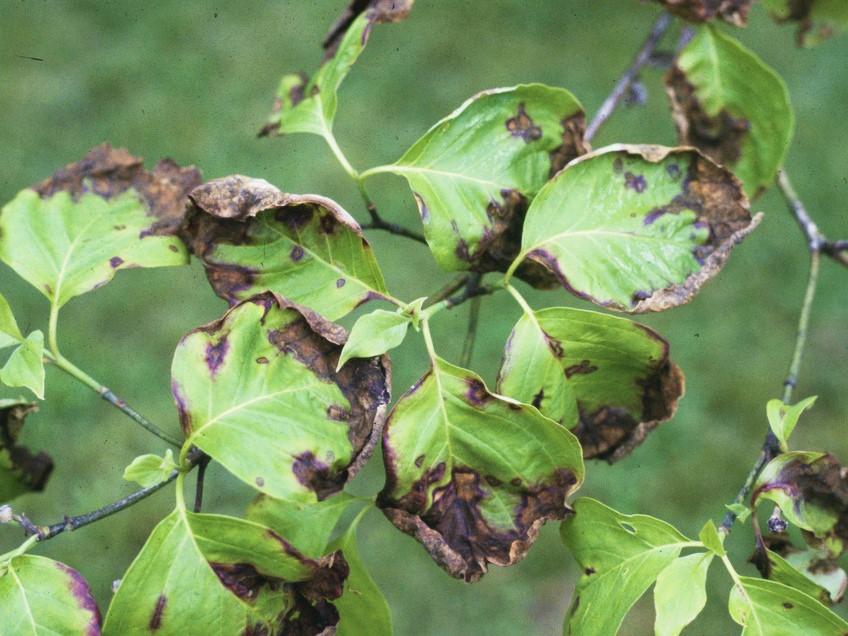Anthracnose – Description & Treatment
Anthracnose (Leaf Blight) is a general term for foliar diseases caused by numerous species of fungi and affects a broad range of trees including ash, dogwood, maple, beech, birch, elm, linden, oak, sycamore and willow.
Visible symptoms of the disease vary with species and host but most commonly, infected leaves develop tan to reddish brown lesions that extend along the veins of the leaf. Such infections can progress into the petiole and /or the twig tissues and result in leaf drop.
Here we will discuss anthracnose of dogwood and of sycamore.
Dogwood anthracnose (Discula destructiva) affects the native dogwood (Cornus florida) and is perhaps the most destructive disease of dogwoods. Infections start in mid to late May and present as tan spots with purple borders. In wet weather, the infected leaves become blighted and incite infections in twigs and branches. Infections that progress to the trunk can result in tree death.

Prune trees in summer during dry weather. Remove diseased twigs and branches. Avoid cultural practices that result in succulent, rapid growth. Use only slow release fertilizers and avoid overwatering. Rake and remove fallen leaves from around the tree to reduce inoculum that will incite infections in the next year.
Make foliar applications of Propizol beginning at budbreak and continue every 21 days if weather favors disease development. In warm, humid weather, reapply to control powdery mildew. For best control, begin applications of this Propizol before disease development.
Sycamore anthracnose (Apiognomonia veneta) infects the native Sycamore (Platanus occidentalis) and to a lesser extent, London plane (Platanus x acerifolia). The fungus overwinters in bark cankers which incite leaf and shoot infections in spring. In cool (55F), wet springs, trees may suffer complete defoliation very early. However, sycamore will develop new foliage following defoliation. Remove fallen leaves to reduce inoculum that incite new infections.
Treat trees with Propizol or PHOSPHO-jet by systemic tree injection. Make applications when the trees are in full leaf and actively growing for control of the next season’s anthracnose development.
Anthracnose can be treated with: Propizol® Fungicide (Sycamore only) or PHOSPHO-jet.
